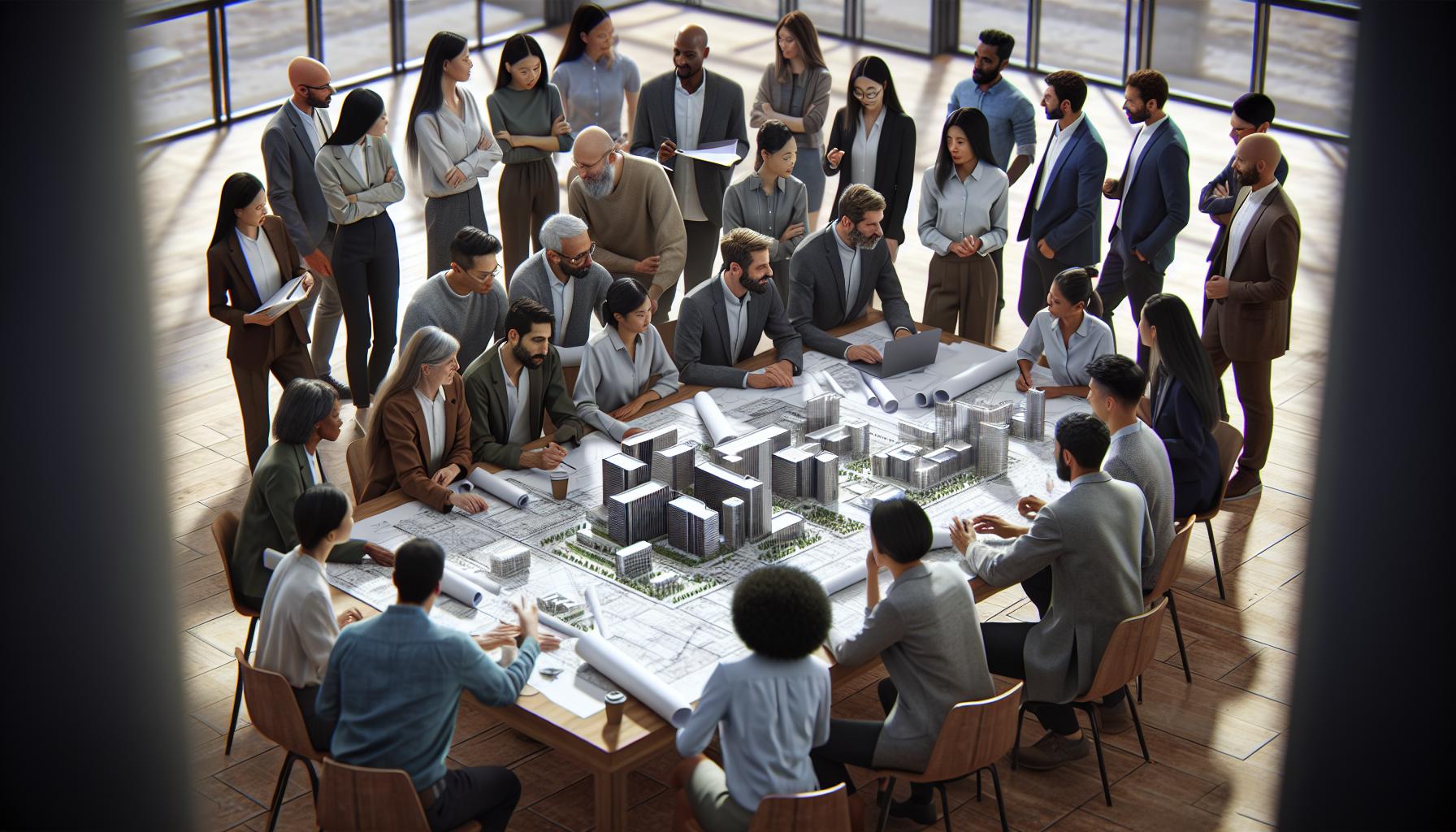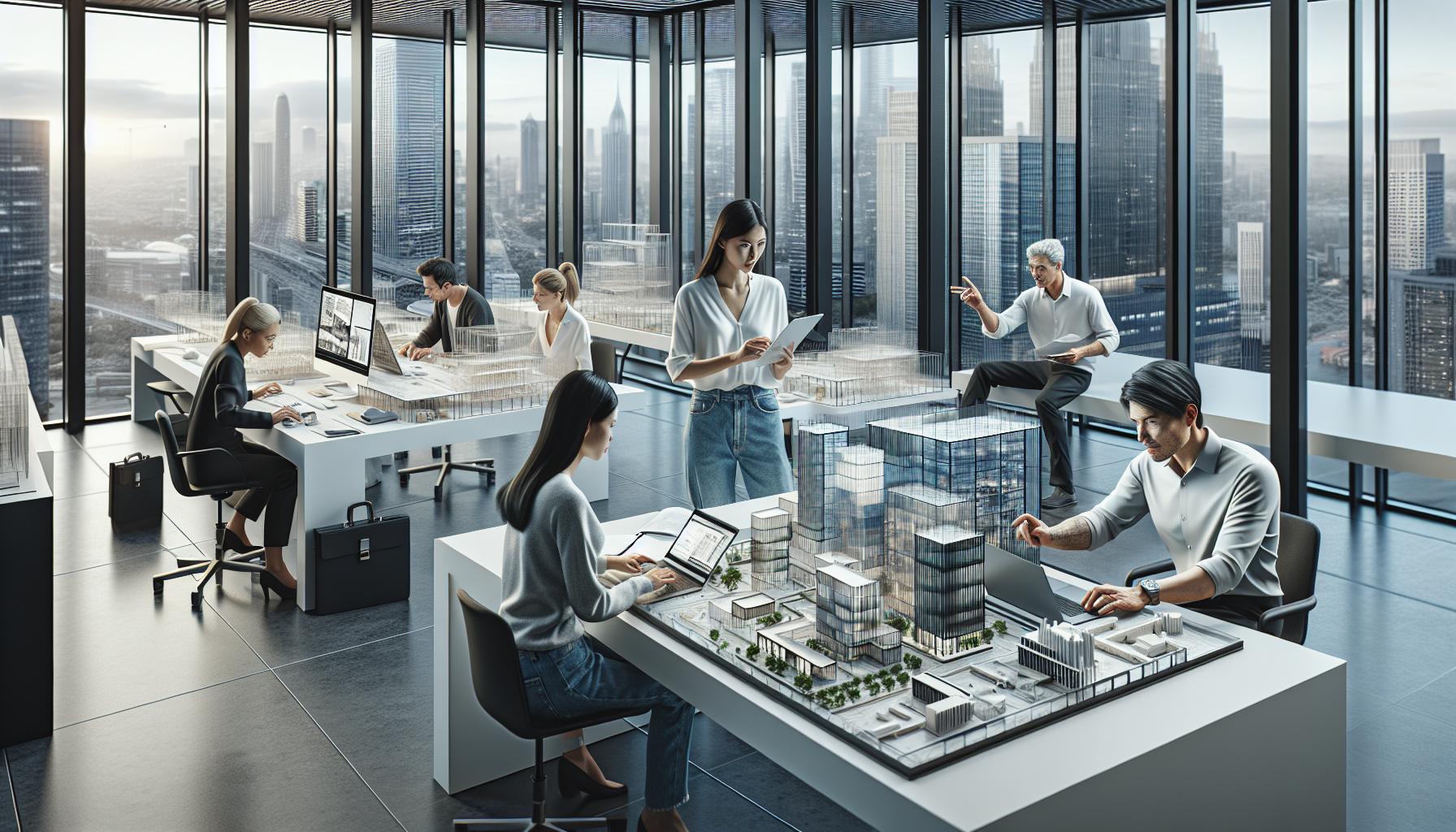In a world where buildings can either inspire awe or induce yawns, architectural planning and design is the secret sauce that turns concrete boxes into stunning masterpieces. It’s not just about slapping a roof on four walls; it’s about crafting spaces that breathe life and creativity. Imagine walking into a room that feels like a warm hug or a park that makes you want to twirl like a child—this is the magic of thoughtful design.
But let’s face it, not all architects are wizards. Some designs can leave you scratching your head, wondering if the blueprint was drawn by a toddler. The right architectural planning ensures every nook and cranny serves a purpose, making spaces functional yet fabulous. Dive into the fascinating world of architectural planning and design, where every detail matters, and creativity knows no bounds.
Architectural Planning and Design
Architectural planning and design encompasses the comprehensive process of creating functional and visually engaging spaces. It integrates a variety of disciplines, including aesthetics, engineering, and environmental considerations. This phase begins with a careful analysis of site-specific factors, such as geography and climate.
Successful architectural projects focus on meeting the needs of users while promoting efficient use of resources. Specific elements like space utilization and flow matter significantly. Design professionals collaborate with clients to establish project goals and aspirations, ensuring that functional requirements align with overall vision.
The role of architectural design goes beyond mere aesthetics. It cultivates environments conducive to activity and interaction. Creativity plays a pivotal role, resulting in spaces that inspire and engage users. Clients and architects must consider sustainability and green building practices, particularly in today’s eco-conscious climate.
Attention to detail remains essential throughout every stage of the design process. Specificity regarding materials, colors, and finishes often impacts both functionality and aesthetics. Innovative practices, such as Building Information Modeling (BIM), are increasingly prominent, allowing for detailed visualization and coordination among teams.
Architectural planning and design embodies a blend of artistic creativity and technical expertise. Through rigorous analysis and thoughtful execution, it transforms ordinary spaces into extraordinary environments that enrich lives and promote creativity.
Key Principles of Architectural Planning

Architectural planning requires a delicate balance of various principles. These principles guide the creation of spaces that not only function effectively but also inspire.
Functionality
Functionality drives the planning phase, ensuring spaces serve their intended purposes. Every area caters to specific activities, whether it’s a living room for relaxation or an office for productivity. Layouts should promote easy movement and accessibility. Zoning takes into account noise separation and privacy. Additionally, the integration of technology enhances operational efficiency, making environments user-friendly.
Aesthetics
Aesthetics play a critical role in architectural planning. Visual appeal significantly impacts how occupants engage with their surroundings. Designers favor elements such as color palettes, materials, and forms to evoke desired emotions. Striking a balance between form and function captures attention without sacrificing usability. Innovative designs incorporate local culture and context, making spaces unique. Cohesive themes throughout the design enhance the overall experience, fostering a sense of belonging.
Sustainability
Sustainability shapes modern architectural practices. Incorporating eco-friendly materials reduces environmental impact, making decisions that prioritize resource efficiency. Designs aim for low energy consumption, promoting the use of natural light and ventilation. Water conservation practices play a vital role, integrating systems that manage resources effectively. Green building certifications recognize efforts in sustainable design, encouraging broader adoption. Prioritizing sustainability ensures architects design for the future, addressing both human needs and environmental responsibilities.
The Architectural Design Process

The architectural design process encompasses several essential phases that transform ideas into realized structures. Each stage plays a pivotal role, ensuring a comprehensive approach to building.
Concept Development
Concept development serves as the foundation of architectural design. This phase involves brainstorming ideas based on client needs and site analysis. Designers explore various themes and styles, considering factors such as function and aesthetics. Concept sketches help visualize the core vision, allowing stakeholders to engage early in the process. Collaboration among architects, clients, and consultants shapes a focused direction tailored to specific objectives. Feedback loops refine initial concepts, ensuring alignment between vision and practical requirements.
Design Evaluation
Design evaluation focuses on assessing the concept against predefined criteria. This stage includes thorough reviews of usability, safety, and compliance with regulations. Architects collect input from various stakeholders through meetings and presentations. Models and simulations facilitate discussions about potential issues or improvements. Various materials, structures, and technologies undergo analysis to ensure they meet the overall objectives of the project. Iterating on feedback allows for adjustments that enhance both functionality and aesthetics, ultimately leading to a well-rounded design.
Implementation
Implementation brings the finalized design to life. This phase involves coordinating multiple teams, including contractors, engineers, and consultants. Clear communication throughout the construction process ensures adherence to design specifications. Regular site inspections monitor progress and address any issues that arise. Architects remain involved to help maintain the vision while adapting to real-world challenges. The end goal is to deliver a structure that meets both the client’s expectations and regulatory standards, creating a space that resonates with its intended audience.
Tools and Technologies in Architectural Planning

Architects utilize various tools and technologies to enhance the planning process. Such resources enable precision in design and efficient workflows.
Software Applications
Numerous software applications play a critical role in architectural planning. AutoCAD helps create detailed 2D and 3D drawings. SketchUp provides an intuitive modeling platform for quick visualizations. Revit, which focuses on Building Information Modeling, supports collaborative design across disciplines. Additionally, rendering software like Lumion and Twinmotion allows architects to produce stunning visual representations, facilitating client presentations. By integrating these tools, professionals streamline project management and enhance communication.
Emerging Technologies
Emerging technologies are reshaping the architectural landscape. Virtual reality offers immersive experiences, enabling clients to explore designs before construction begins. Drones streamline site surveys, capturing aerial data efficiently for analysis. 3D printing revolutionizes prototyping, allowing architects to create tangible models swiftly. Furthermore, augmented reality overlays digital information onto physical environments, enhancing design evaluation. As these technologies evolve, their integration into architectural practices promotes innovation and sustainability, improving overall project outcomes.
Challenges in Architectural Planning and Design
Architectural planning and design face several challenges that impact the effectiveness of projects.
Regulatory Constraints
Regulatory constraints significantly affect architectural design. They include zoning laws, building codes, and accessibility guidelines. Adhering to these regulations can complicate the design process. Architects must navigate local government requirements while delivering innovative solutions. Failure to comply with regulations can lead to penalties or project delays. Collaboration with legal and regulatory experts often becomes essential to ensure that designs meet all mandates. Addressing these constraints upfront allows teams to avoid costly redesigns later.
Budget Limitations
Budget limitations impose critical restrictions on architectural projects. Fixed financial resources dictate design choices, materials, and the scope of work. Architects often prioritize functionality and aesthetics while managing costs. Compromising on quality can impact long-term sustainability. Effective communication with clients regarding budget constraints fosters transparency and sets realistic expectations. Utilizing cost-effective materials and innovative design strategies helps optimize spending. Continuous monitoring of expenses throughout the project ensures that financial resources are used efficiently, allowing architects to achieve desired outcomes within budgetary confines.
Architectural planning and design play a pivotal role in shaping environments that inspire and engage. By seamlessly integrating functionality, aesthetics, and sustainability, architects can create spaces that not only meet practical needs but also foster emotional connections. The emphasis on collaboration and innovative technologies ensures that designs are both visionary and grounded in reality.
As the field continues to evolve, staying attuned to emerging trends and challenges will be essential for architects. This commitment to thoughtful design will ultimately lead to buildings that enrich communities and reflect the values of modern society. Embracing these principles paves the way for a future where architecture serves as a catalyst for positive change.



